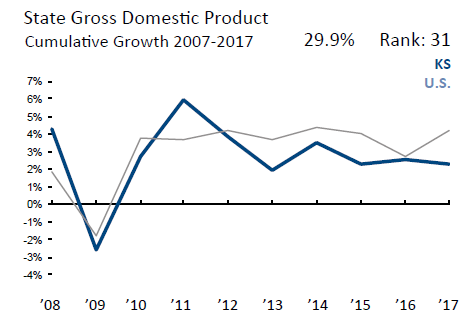
Voters approve most school bond issues in Kansas. It’s rare for one to fail by a wide margin, but that’s exactly what happened last month in Lincoln, Kansas.
By more than a 2-to-1 margin, voters scrapped a $4.9 million bond issue that would have added storm shelters, repaired school roofs and upgraded HVAC systems in the central Kansas school district.
A group of a three-dozen-plus citizens spent $1,500 and many man-hours to defeat the bond proposal, though David Gerstmann, one of the activists, said the fiscally-conservative community may have sunk the bond issue without their efforts.
“If people think we had an effect, it was because we demonstrated to the voters that we did not need the bond,” Gerstmann said. “The repairs and infrastructure upgrades the board claimed would cost several million dollars could be done for a fraction of that cost.”
The Kansas Department of Education only tracks school bond issues that seek to raise more than 14 percent of assessed valuations. The Lincoln USD 298 election wasn’t big enough to make the list, but KSDE records show 15 bond elections worth $928 million scheduled this fiscal year. Voters in Andover, Geary County, and Southern Lyons County school districts haven’t cast ballots yet, but in 12 others, the votes are in. An average of 67 percent of voters in 10 elections supported the bond issues. Fifty-eight percent of Cherryvale School District voters killed a $19 million bond proposal in February, and 65 percent of Moundridge USD 423 voters spiked a $20 million bond on April 4.
Gerstmann said Lincoln district citizens understand that their schools have needs, but local activists fought for responsible spending.
“We support the schools. We recognize certain things need to be fixed, but before we go and put ourselves $7 million in the hole with interest and fees, let’s figure out what’s going on,” Gerstmann said.
Located in north-central Kansas northwest of Salina, Lincoln is the largest community in Lincoln County. As of the 2010 U.S. Census, the city boasted 1,297 residents in a county of 3,241. The school district, USD 298, has about 300 students. It’s a rural, agricultural community bolstered by entrepreneurs and small business owners.
The entrepreneurial spirt of some of the community may have helped spark concerned citizens’ campaign efforts in the April bond election. They thought they may be able to do what district officials said needed to be done for a better price. By using open records requests and seeking work estimates from vendors, the citizens group drafted a far cheaper plan for school upgrades than what the bond issue proposed.
“Instead of attacking the district’s intent, we put out a plan through advertising in the newspaper and through a newsletter that we mailed to every person in the district of what the district’s plans and budget were for upgrades and our plan for repairs and upgrades,” Gerstmann said.
Competing Plans
District officials released a conceptual budget and plan that said schools needed between $3.9 and $4.9 million, but Gerstmann said residents used Kansas Open Records Act requests to learn that the district didn’t get individual quotes for much of the maintenance they said they needed.
For example, the bond plan called for the $1.8 million construction of two storm shelters. The citizen group found storm shelter vendors who provided quotes of less than $150,000 per shelter.
The district’s proposal included upwards of $100,000 for roof repairs at the elementary school and up to $600,000 for the high school. Citizens also learned that the elementary school roof didn’t have a single leak after the bond issue election, but the high school roof is in disrepair.
Gerstmann and others tried to get more information about how many leaks existed on the roof, but could not obtain answers leading up to the bond vote.
District and consultant’s inability to answer questions about the high school roof–like its square footage–are one thing that spurred the citizens group into action. School officials didn’t provide the group with any evidence that they had obtained scope of work estimates from area roofing companies before putting out the bond plan.
“We actually had vendors provide estimates and quotes, and we found that the district did not,” Gerstmann said. Instead, district officials consulted with 360 Energy Engineering, a contracting firm in Lawrence. Gerstmann said he can’t find any maintenance records of anyone from the company examining the roof until a few days before the actual election.
The district plan also included replacing 40 rooftop HVAC units at the high school for a cost of about $600,000. Gerstmann’s group learned only four of the units are broken.
“We also found previous bids that seemed to indicate these only cost about $5,000 each,” Gerstmann said. “If there’s only four broken units, why don’t you just fix them?”
In researching the district’s maintenance expenses, group members learned that the district has been rolling over capital outlay funding of more than $400,000 for the last three years. This wasn’t a district that was out of money, Gerstmann says. Officials were sitting on more than $450,000 in capital outlay funding and a quarter of a million dollars in a contingency fund as of June 30, 2016. Through KORA requests, the group learned the district still had $400,000 in that account after the bond failed.
After the Bond Election
USD 298 Board of Education President Monty Breneman told the Lincoln Sentinel-Republican that the district still needs storm shelters, roof replacement and HVAC upgrades. The need, he says, increases everyday.
“So the board will begin weighing our options for addressing these critical needs as soon as possible,” Breneman told the local paper.
At a school board meeting May 1, board members declined to say whether using some of their capital outlay funding will be a possible solution.The district has said it may cut back on some transportation for after-school events.
Gerstmann and others fear the district may make other painful cuts in the future that only affect fringe areas of the budget instead of finding much larger savings on the administration and capital outlay sides of the budget. Other Kansas school districts seem to have had a history of punishing kids and parents if you don’t give them all the money they ask for, he said.
The lopsided vote wasn’t an anti-tax vote.
“It doesn’t have to be about whether you want higher or lower taxes,” he said. “It’s about responsible spending.”
The citizens group was a broad coalition. When they raised funding to run an ad in the newspaper, they listed 36 donor names in the advertisement. Gerstmann said they had to turn potential donors away, because they had more than enough money to fund their efforts.
“Things break and things need to be fixed, but if we don’t work together to find reasonable ways to do it, we’re all going to end up in horrible debt,” he said.



